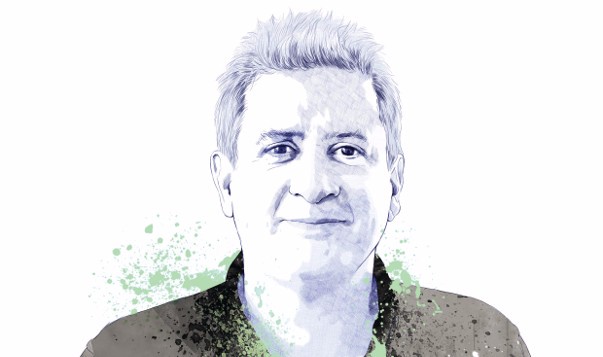The digital transformation has been blamed for making humans worse communicators. The opposite is true, argues Andy Law
Albert Mehrabian’s 1971 book Silent Messages gave birth to the notion that only 7% of all communication is verbal. This factoid wasn’t a literal reading of his research – Mehrabian’s theory tested only people’s responses to single words. But the legend lingered on.
While scientists, psychologists and journalists bickered over what Mehrabian’s research really meant, the study was superseded by societal change. Today, the proportion of communication that is verbal is much lower than 7%. The march of digital into the business world has seen to that. Our communication is converted to transmitted data at a faster, and more substantial, rate than ever before.
We humans are big data packages, able to store, within ourselves, a phenomenal quantity of information. Biologist Yevgeniy Grigoryev calculates the amount to be 150 zettabytes – equivalent to 75 billion fully loaded 16GB iPads. Not only can we store vast quantities of data through digital transformation, we have become expert at analyzing, broadcasting and receiving it at an astonishing rate. The scale of data interactions is growing rapidly. Some of these we know about. Others we don’t.
I shrug off claims that the digitization of our lives has damaged communication, because the opposite is true. Our communication is exponentially more sophisticated than it was even ten years ago. We should give ourselves some credit: this is not a simple transmission. Our data is received, transmitted, processed, reprocessed, filtered, connected, reconnected, aggregated, matched and stored at a speed that should take the breath away (but doesn’t because we have become used to it).
Motives for our data donation vary, minute by minute, but however we transact it, our data connects and reconnects with other data: what we watch, where we go, what we buy, who we talk to and what we search for becomes shared and stored information.
So human-to-human contact, connection and correspondence are now as much about data-to-data flow as flesh-to-flesh handshakes or eye contact. In fact, our data is propelled forward, analyzed, attended to and responded to so quickly, efficiently and effectively that we are communicating even when we think we are not. That is the very definition of advanced communication. We communicate widely when alone, asleep or even dead. Our digital afterlife raises many issues, not least ethical ones. And we can manipulate our data. Digital cosmetic surgery allows us to be whoever we want to be, and we can have multiple personalities.
Our data transmissions push us further up the evolutionary scale. We marvel at dolphins’ pulsed sounds and whistles forming a sonic language; the communications system of ants, using pheromones, touch and sound. But these wonders pale into insignificance when compared to how we humans now connect and communicate.
We have become superior beings through the melding of three earthly inventions: software automation, machine-to-machine technology and the internet. We should stop talking about the death of human communication and appreciate how, through digitization, we have given it a wonderful new life.
Andy Law is the Director at Parity Group and executive chairman of SuperCommunications
[button type=”large” color=”black” rounded=”1″ link=”http://issuu.com/revistabibliodiversidad/docs/dialogue-9-sept2015/65″ ]READ THE FULL GRAPHIC VERSION[/button]

